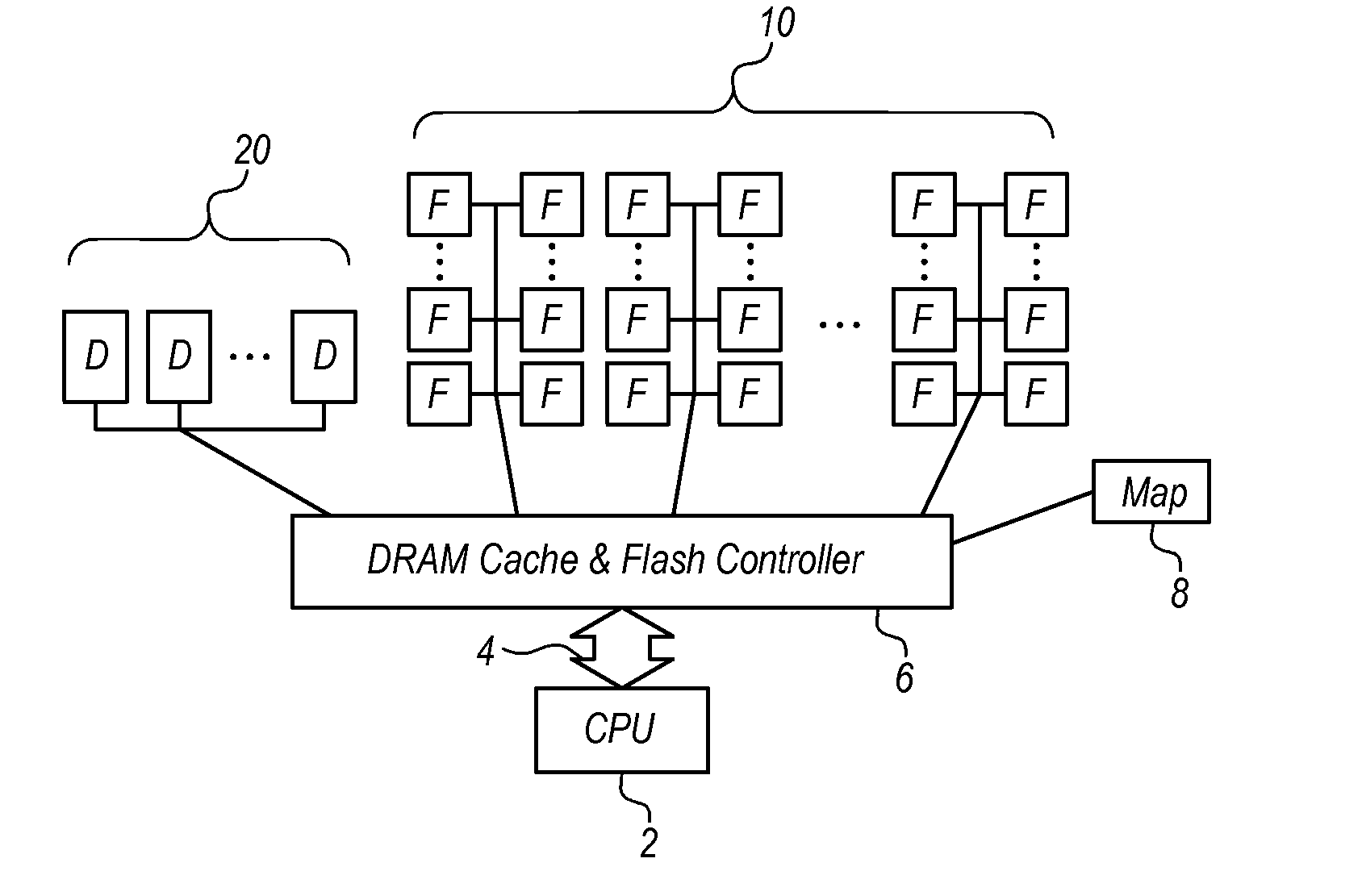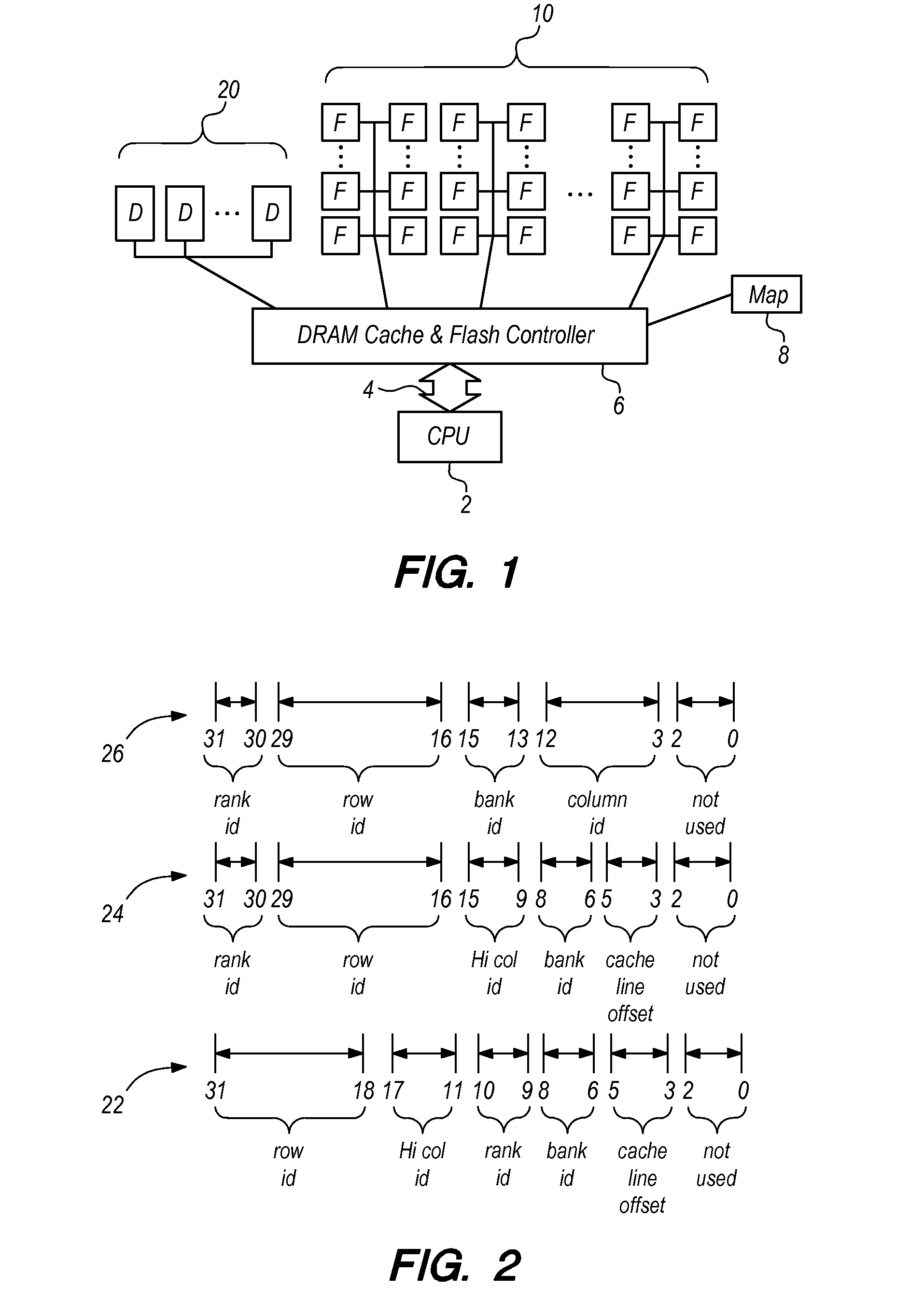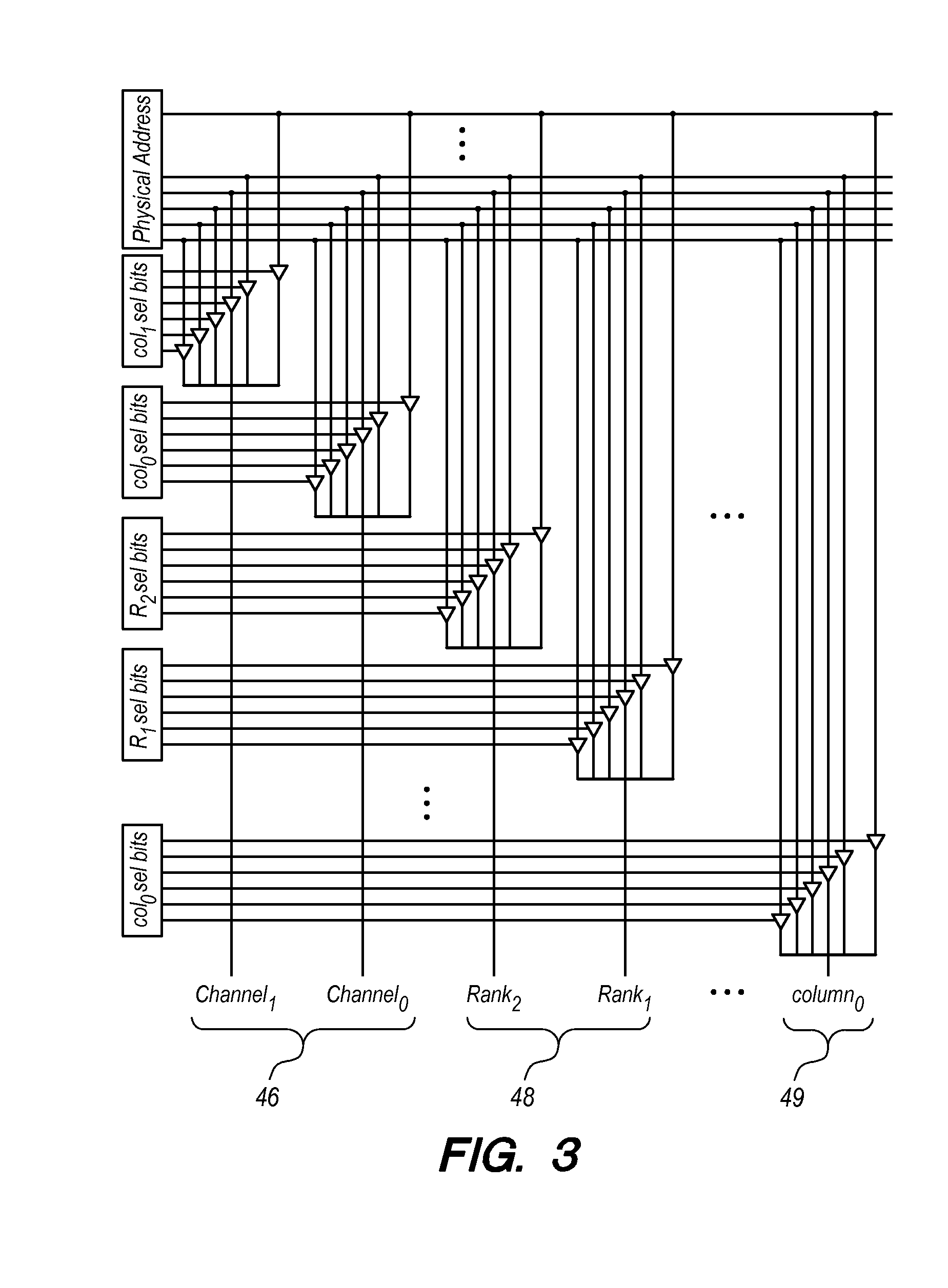NVMM: An Extremely Large, Logically Unified, Sequentially Consistent Main-Memory System
a main-memory system, logically unified technology, applied in the direction of memory architecture accessing/allocation, memory adressing/allocation/relocation, instruments, etc., can solve the problems of large problems, the entire system runs at the speed of the slowest component, and the high-level cache becomes useless. , to achieve the effect of large solid-state capacity
- Summary
- Abstract
- Description
- Claims
- Application Information
AI Technical Summary
Benefits of technology
Problems solved by technology
Method used
Image
Examples
Embodiment Construction
[0038]Revisiting the design choice of ever-larger main memory systems of DRAM, an obvious alternative is NAND flash. In one embodiment, a single node flash-centric memory system is disclosed.
[0039]The operating system's file system has traditionally accessed NAND flash memory because NAND flash is a slow, block-oriented device, and the software overheads of accessing it through the file system are small relative to the latency of retrieving data from the flash device. However, if flash were used for main memory, it would be accessed through a load / store interface, which is what main memory demands. For comparison, a file-system access requires a system call to the operating system, a potential context switch, and layers of administrative operations in the operating system—all of which add up to thousands of instructions of overhead; on the other hand, a load / store interface requires but a single instruction: a load or store, which directly reads or writes the main memory, often by w...
PUM
 Login to View More
Login to View More Abstract
Description
Claims
Application Information
 Login to View More
Login to View More - R&D
- Intellectual Property
- Life Sciences
- Materials
- Tech Scout
- Unparalleled Data Quality
- Higher Quality Content
- 60% Fewer Hallucinations
Browse by: Latest US Patents, China's latest patents, Technical Efficacy Thesaurus, Application Domain, Technology Topic, Popular Technical Reports.
© 2025 PatSnap. All rights reserved.Legal|Privacy policy|Modern Slavery Act Transparency Statement|Sitemap|About US| Contact US: help@patsnap.com



